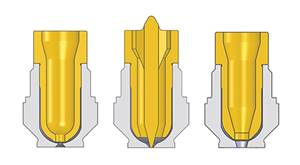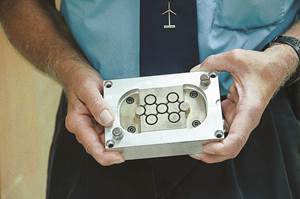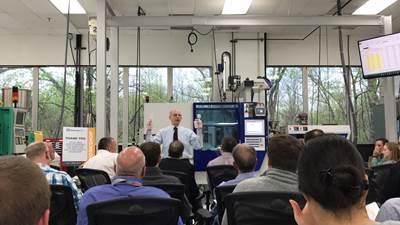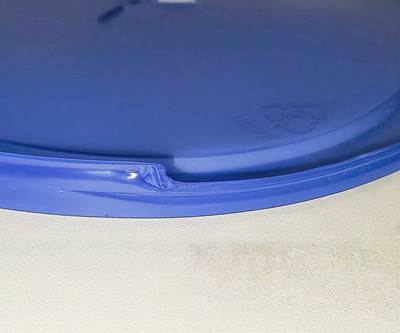Diagnosing Defects: Determine True Root Cause Before Adjusting a Process
Common defects can have common causes — flash equals worn mold shutoffs, right? Except when they don’t. Trust your eyes, but verify the root cause before adjusting a process.
One of the biggest lessons I have learned in troubleshooting for injection molding, is that identifying the real issue is sometimes not as easy simple as looking at the parts in hand. Just because we are looking at parts with flash on them, doesn’t mean that we have a mold with damaged shutoffs nor does it mean we have a machine with a clamp issue.
The injection molding process is what I have referred to as a “connected process,” which means that every parameter impacts all the others. So even though we are looking at parts with flash, we may have a mold that isn’t filling easily enough. One might automatically assume that a part with too much plastic would mean the exact opposite. Excess resin is a possibility, but if you pull a mold to have a toolmaker fix the shutoffs and they find nothing wrong with them, there could be a problem.
You set the mold again, you’re still dealing with flash, and now the parts will be delivered late to the customer, causing an even bigger problem. So, what could make a part flash but not be related to the condition of the mold shutoffs or an issue with the machine’s clamp?

Never make assumptions about common defects like flash. The root cause might not be the commonly accepted one. Source: Plastics Technology
If we look at the very basics of injecting plastic into a mold, before plastic can fill the cavity, air must be allowed to escape from it. This is done through vents cut into the parting line of the cavity-forming steel, which evacuate air from the cavity into the atmosphere. Typically, when these vents are obstructed, you may see burns or shorts on your parts, but in some cases, a blocked vent can cause conditions that result in the part flashing.
How? The increased resistance to the plastic entering the cavities can cause an increase in cavity pressure due to the surge of injection pressure required to fill, resulting in flash. This can also cause the melt temperature to increase due to the increase of shear, which can also result in flash.
Accounting for Normal Process Variation
This is just one example of how a common defect can cause you to make assumptions about what steps to take to resolve it, but what if the defect itself isn’t really the issue at all? Let’s say we have our same part, but this time we are having sporadic issue with shorts or underfills. Remember: even the most robust processes will have some amount of process variation — there is no such thing as zero variation in an injection molding process. Even when running the exact same lot of material, we still see process variation, a lot of which comes from the cycling of the machine and/or hot runner heaters.
I can’t tell you how many times I have gone to a machine to help with a shorting issue, only to find out the real issue is flash.
This is normal process variation and it’s what causes your process to produce short shots in this particular example, but it is not the root cause of our shorts. Calling it normal process variation, means exactly that, it is normal, so our process should be optimized with this variation in mind. Often the root cause of the problem is whatever is causing the flash on our parts. Yes, flash.
I can’t tell you how many times I have gone to a machine to help with a shorting issue, only to find out the real issue is flash. I find that process parameters have been changed due to flash, but these changes have decreased the process window enough to cause normal variation to result in sporadic shorts to be produced.
The real action we should be taking is finding the root cause of the flash so the process can be returned to the optimal settings established during process development. There are many cases in which I discover these adjustments were made during process development, and the process was established without considering the normal variation inherent to it.
This typically means that the mold was never right from the start, and it cost more time and money-making adjustments after we are in production. For processors, it is critical that we challenge a process when we are troubleshooting an issue. This will help ensure we are chasing the correct problem. When we do have to make changes to a process, it is critical to verify that it is still robust enough to not cause us other problems later in the run.
In a perfect world without customer due dates and a limitless budget, we could shut a job down when the mold has worn to a point that our process is no longer capable, but we all know that isn’t the world we are in most of the time. We also can’t afford to produce scrap, which can result in more downtime, at a higher cost and that cost could be to our reputations if our customer is sent defective product.
When we are forced into a position where a process needs to be adjusted, we must understand what is causing us to need to make those changes. “What is the defect?,” “Why is it defective?” and “How do we fix it?” are questions we have to answer before we make adjustments. Then we must challenge those adjustments to understand what impact they could have on the process and part quality as well.
Making process changes strictly based on what we see on the part we have in our hands will cause more harm than good in most circumstances. We should take the time and identify the root cause, even if we may need to delay implementing the corrective action until that is possible. In these cases, I see making controlled process changes as the containment step of the corrective action process. Make sure to document the issue and what actions need to take place when it is possible to address the root cause.
ABOUT THE AUTHOR: Robert Gattshall has 30 years of experience in the injection molding industry and holds multiple certifications in Scientific Injection Molding and the tools of Lean Six Sigma. Gattshall has developed several “Best in Class” Poka Yoke systems with third-party production and process monitoring such as Intouch Monitoring Ltd. and RJG Inc. He has held multiple management and engineering positions throughout the industry in automotive, medical, electrical and packaging production. Gattshall is also a member of the Plastics Industry Association’s Public Policy Committee. In January 2018, he joined IPL Plastics as process engineering manager. Contact: 262-909-5648; rgattshall@gmail.com.
Related Content
Hot Runners: A View from the Bottom Up
Addressing hot-runner benefits, improvements, and everyday issues from the perspective of decades of experience with probably every brand on the market. Part 1 of 2.
Read MoreThe Importance of Melt & Mold Temperature
Molders should realize how significantly process conditions can influence the final properties of the part.
Read MoreHow to Select the Right Tool Steel for Mold Cavities
With cavity steel or alloy selection there are many variables that can dictate the best option.
Read MoreInjection Molding: Focus on these Seven Areas to Set a Preventive Maintenance Schedule
Performing fundamental maintenance inspections frequently assures press longevity and process stability. Here’s a checklist to help you stay on top of seven key systems.
Read MoreRead Next
The Experience Curve and Well-Trained Process Technicians
Pairing external big picture training with internal job-specific instruction can help your process technicians meet quality expectations as well as production targets.
Read MoreDon’t Get Caught in the Flash-and-Shorts Chase
Injection molding’s most common defects can have inverse correlation, where correcting one causes the other, leading to the “chase.”
Read MoreIs It Time For Injection Molding Machines to be Standardized?
If you looked at four machines from four different suppliers, you’ll find four different sets of icons and terminologies, all in different layouts.
Read More






.jpg;maxWidth=300;quality=90)














